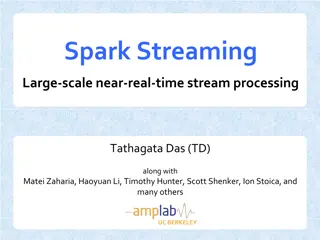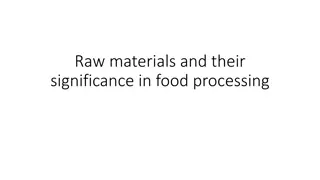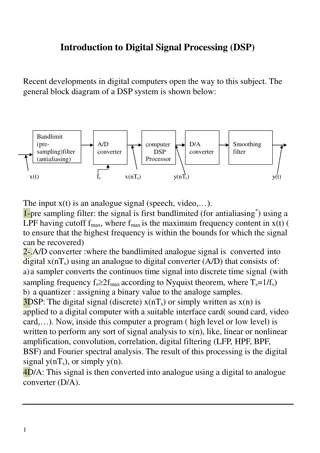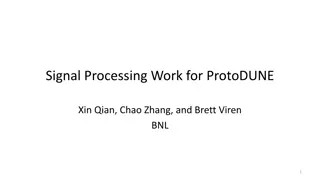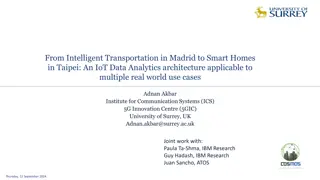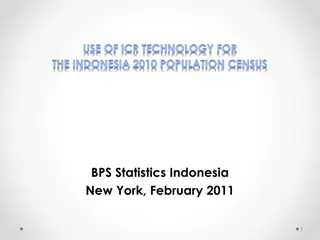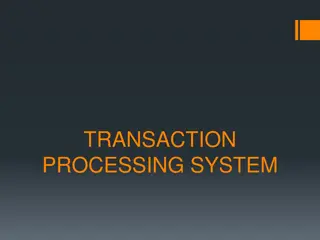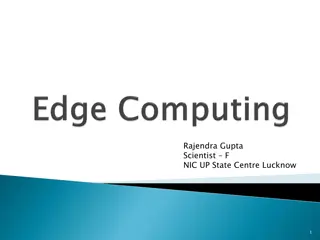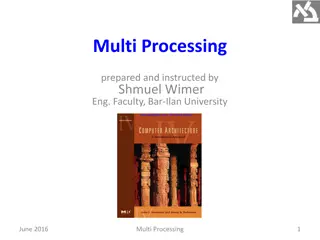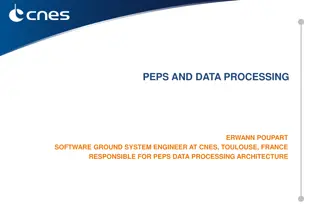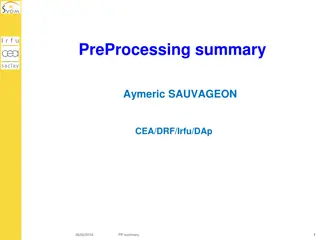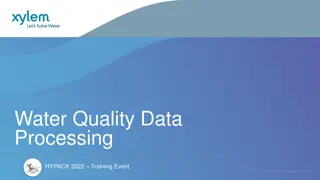Overview of Data Processing in Research
The research process involves various stages, including data processing, data preparation, and questionnaire administration. Data processing is vital for analyzing and interpreting research findings effectively. It encompasses tasks like editing, coding, and computing scores to prepare master charts. Efficient data processing is crucial for accurate results in research projects.
Download Presentation

Please find below an Image/Link to download the presentation.
The content on the website is provided AS IS for your information and personal use only. It may not be sold, licensed, or shared on other websites without obtaining consent from the author.If you encounter any issues during the download, it is possible that the publisher has removed the file from their server.
You are allowed to download the files provided on this website for personal or commercial use, subject to the condition that they are used lawfully. All files are the property of their respective owners.
The content on the website is provided AS IS for your information and personal use only. It may not be sold, licensed, or shared on other websites without obtaining consent from the author.
E N D
Presentation Transcript
ADMINISTRATION OF QUESTIONNAIRE 3
DATA PROCESSING One of the important stages of the research process is data processing and analysis. Once data are collected the researcher turns his focus of attention on its processing. 4
DATA PROCESSING . A good researcher makes a perfect plan of data processing and analysis. To some researchers data processing and analysis is not a very serious activity. They feel that data processing is a job of computer assistants. 5
DATA PROCESSING . As a consequence, they have to be contended with the results given by computer assistants which may not help them to achieve their objectives. To avoid such situations, it is essential that data processing must be planned in advance and instructed to computer assistants accordingly. 6
DATA PROCESSING . Data processing refers to : Editing, Coding, Recoding Computing of the scores, Preparation of master charts. 7
Editing of Data Missing entries Illegible entries Discrepancies 8
Editing of .. Contingency Responses : Marital Status : Married/Unmarried Number of Children : One/Two/Not Applicable 9
Coding Coding of data involves assigning of number to each response of the question. Example : Gender : Male = 1 Female = 2 The purpose of giving number is to translate verbal data into numerical data, which may be counted and tabulated. The task of researcher is to give numbers to response carefully. 10
CODE BOOK Variable No. Information Sought Responses Code Q.No 2 V1 Age Actual Worker Supervisor Manager Public Private Graduate Intermediate High School Middle School Primary Illiterate Other Married Unmarried Widow Divorce Agree Undecided Disagree - 1 2 3 1 2 1 2 3 4 5 6 7 1 2 3 4 1 3 V2 Designation 4 V3 Establishment 5 V4 Level of Education 6 V5 Marital Status Attitude of Employer Preference employees 43 V42 for male 2 3 11
Preparing a Master Chart After a codebook is prepared, the data can be transferred either to a master chart or directly to computer through a statistical package 12
Master Chart Going through master chart to computer is much more advantageous than entering data directly to computers. 13
Master Chart Entering data directly to computer is disadvantageous, as there is no way to check wrong entries, which will show inconsistencies in tabulated data at the later stages of tabulation. 14
MASTER CHART VARIABLE LABELS LEV EL OF EDU CAT ION NA TU RE OF WO RK DUR ATI ON OF WO RK ATTIT UDE OF EMPL OYER DES IGN ATI ON ESTA BLIS HME NT MARI TAL STAT US PR OM OTI ONS A G E WA GES RESPONDENT NUMBER VARIABLE NUMBER V 2 V1 V3 V4 V5 V6 V7 V8 V9 V10 1 23 3 4 2 2 3 14 1220 3 4 2 28 2 3 4 1 5 5 1547 3 3 3 23 4 4 4 2 1 4 1922 1 3 4 28 1 3 3 1 2 5 1847 2 5 5 23 3 4 2 2 1 7 2922 1 1 15

 undefined
undefined


